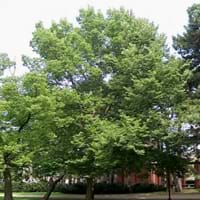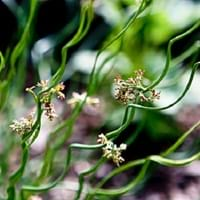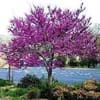Life Span
Perennial
Perennial
Origin
North America, Canada
World/Pandemic, North America, Europe, Russia/Siberia, Africa, Asia
Types
Celtis africana, Celtis australis, Celtis bungeana
not available
Number of Varieties
Not Available
Habitat
bottomlands, limestone outcrops
All sorts of environments, Banks, ditches, marshes, Shores of rivers or lakes
USDA Hardiness Zone
2-9
6-9
Sunset Zone
1a, 1b, 2a, 2b, 3a, 3b, 4, 5, 6, 7, 8, 9, 10, 11, 12, 13, 14, 15, 16, 17, 18, 19, 20, 21, 22, 23, 24
H1, 1a, 1b, 2a, 2b, 3a, 3b, 4, 5, 6, 7, 8, 9, 10, 11, 12, 13, 14, 15, 16, 17, 18, 19, 20, 21, 22, 23, 24
Habit
Spreading
Clump-Forming
Flower Color Modifier
Bicolor
Bicolor
Fruit Color
Purple
Not Available
Leaf Color in Spring
Light Green
Green
Leaf Color in Summer
Dark Green
Green
Leaf Color in Fall
Light Yellow
Green
Leaf Color in Winter
Not Available
Green, Tan, Sandy Brown
Leaf Shape
Toothed
Long hair-like leaves
Plant Season
Fall
Spring, Summer, Fall, Winter
Sunlight
Full Sun
Full Sun, Partial Sun
Type of Soil
Clay, Loam
Clay, Loam, Sand
The pH of Soil
Acidic, Neutral, Alkaline
Acidic, Neutral
Soil Drainage
Average
Poorly Drained
Bloom Time
Spring
Early Summer, Summer, Late Summer, Early Fall
Tolerances
Drought, Heat Tolerance, Salt, Shade areas
Drought
Where to Plant?
Ground
Ground, Pot
How to Plant?
Grafting, Seedlings
Divison, reseeds
Plant Maintenance
Medium
Medium
Watering Requirements
Needs 2-3 times watering per week
Does not require regular watering
In Summer
Average Water
Lots of watering
In Spring
Moderate
Moderate
In Winter
Average Water
Average Water
Soil pH
Acidic, Neutral, Alkaline
Acidic, Neutral
Soil Type
Clay, Loam
Clay, Loam, Sand
Soil Drainage Capacity
Average
Poorly Drained
Sun Exposure
Full Sun
Full Sun, Partial Sun
Pruning
Remove damaged leaves, Remove dead branches, Remove dead leaves, Remove tight V-branching crotches
Prune to control growth, Remove damaged leaves, Remove dead branches, Remove dead leaves
Fertilizers
All-Purpose Liquid Fertilizer, Apply 10-10-10 amount, organic fertlizers
All-Purpose Liquid Fertilizer
Pests and Diseases
Black sooty mold, Fungal Diseases, Powdery mildew, Red blotch, woolly aphid
Not Available
Plant Tolerance
Shade areas
Drought
Flowers
Insignificant
Insignificant
Flower Petal Number
Not Available
Single
Foliage Texture
Medium
Fine
Foliage Sheen
Matte
Glossy
Invasive
Sometimes
Sometimes
Attracts
Birds, Insects
Bumblebees, Flying insects
Allergy
Not Available
Unknown
Aesthetic Uses
Not Available
Informal Hedge, Woodland margins
Beauty Benefits
Slow downs aging
Not Available
Environmental Uses
Food for animals, Food for birds
Air purification
Medicinal Uses
Colic, Diarrhea, Dysentry, Menstrual Disorders, Sore throat
Not Available
Part of Plant Used
Fruits, Pulp, Seeds, Wood
Not Available
Other Uses
Food for animals, Used as a nutritious food item
woven into the covering of tatami mats
Used As Indoor Plant
No
No
Used As Outdoor Plant
Yes
Yes
Garden Design
Screening / Wind Break, Shade Trees, Street Trees
Bog Garden, Container, Mixed Border, Water Gardens
Botanical Name
CELTIS occidentalis
JUNCUS effusus f.Spiral
Common Name
Common Hackberry, Hackberry
Curly wurly
In Hindi
HACKBERRY
Corkscrew Rush
In German
Hackberry
Corkscrew Rush
In French
micocoulier
Corkscrew Rush
In Spanish
almez
Corkscrew Rush
In Greek
hackberry
Corkscrew Rush
In Portuguese
hackberry
Corkscrew Rush
In Polish
hackberry
Corkscrew Rush
In Latin
Hackberry
Corkscrew Rush
Phylum
Magnoliophyta
Magnoliophyta
Class
Magnoliopsida
Liliopsida
Family
Ulmaceae
Juncaceae
Clade
Angiosperms, Eudicots, Rosids
Angiosperms, Commelinids, Monocots
Tribe
Not Available
Not Available
Subfamily
Not Available
Not Available
Number of Species
Not Available
Importance of Hackberry and Corkscrew Rush
Want to have the most appropriate plant for your garden? You might want to know the importance of Hackberry and Corkscrew Rush. Basically, these two plants vary in many aspects. Compare Hackberry and Corkscrew Rush as they differ in many characteristics such as their life, care, benefits, facts, etc. Every gardener must at least have the slightest clue about the plants he wants to plant in his garden. Compare their benefits, which differ in many ways like facts and uses. The medicinal use of Hackberry is Colic, Diarrhea, Dysentry, Menstrual Disorders and Sore throat whereas of Corkscrew Rush is Not Available. Hackberry has beauty benefits as follows: Slow downs aging while Corkscrew Rush has beauty benefits as follows: Slow downs aging.
Compare Facts of Hackberry vs Corkscrew Rush
How to choose the best garden plant for your garden depending upon its facts? Here garden plant comparison will help you to solve this query. Compare the facts of Hackberry vs Corkscrew Rush and know which one to choose. As garden plants have benefits and other uses, allergy is also a major drawback of plants for some people. Allergic reactions of Hackberry are Not Available whereas of Corkscrew Rush have Unknown respectively. Having a fruit bearing plant in your garden can be a plus point of your garden. Hackberry has no showy fruits and Corkscrew Rush has no showy fruits. Also Hackberry is not flowering and Corkscrew Rush is not flowering . You can compare Hackberry and Corkscrew Rush facts and facts of other plants too.





